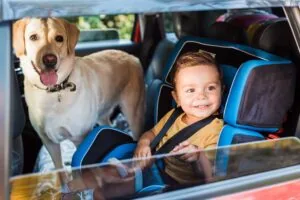Ringworm
Ringworm
Although the name often misleads pet owners into thinking a worm has invaded their pet’s bodies, ringworm is actually a fungus that can affect the hair, skin and nails. Common in cats, this fungus can lead to circular patterns of hair loss and red, scabby bumps. Before you introduce another pet into your home, knowing the facts about ringworm and how to prevent the skin condition from spreading is crucial. Dermatophytes, a fungi that feeds on protein in the skin, hair and claws, is the agent of ringworm. Infections are transmitted by contact with infected hairs from another infected pet in the environment, or through bedding, grooming tools, and even fleas. The fungus can be passed between animals and humans, but young and elderly people are more susceptible to developing the infection. Those with weak immune systems are also more prone to ringworm.
Causes of Ringworm in Dogs
Most pets with ringworm contract it from direct contact with an infected animal (likely a dog or cat) or human. It is possible for dogs to have the ringworm fungus on their body but show no external signs of the disease; however, they can still pass the disease on to humans or other animals. Ringworm can also be passed on through contaminated objects such as brushes, dog beds, and toys, as well as surfaces that are difficult to clean, like rugs, wool, and wood.
Some types of ringworm fungi live in the soil, and a dog could contract ringworm by digging around in the dirt. This is especially true in warm and humid environments. The spores of the fungi that cause ringworm are quite hardy and can live in the environment for at least 18 months. Infection with ringworm occurs when spores attach to damaged skin. Lesions (abnormal areas) on the skin will typically appear about 1-3 weeks after exposure.
Symptoms of Ringworm in Dogs
In dogs, the areas usually affected by ringworm are the face, ears, tail, and feet. Symptoms generally include one or more of the following:
- Circular areas of hair loss, often with a red and crusty edge
- Broken hair and a poor hair coat
- Dry, scaly skin or areas of excessive dandruff
- Inflamed areas of skin
- Darkened patches of skin
- Itchiness, scratching, or excessive grooming
- Inflamed nail beds or darkened or dry nails
- Dry, brittle, or misshapen nails
Can you get ringworm from your pet?
Ringworm is contagious to people; however, some people are at greater risk than others. The fungus takes advantage of skin belonging to those with reduced immune capacity. This puts young animals and children, pregnant women, elderly people and pets, those who are HIV-positive, people on chemotherapy or taking medication after transfusion or organ transplant, and highly stressed people and animals at high risk. In general, if you do not already have ringworm at the time your pet is diagnosed, you probably will not get it. Keep in mind that skin must be irritated to become infected.
Diagnosis
In some cases, we know for sure that the pet has dermatophyte fungi while in other cases we are only highly suspicious. Ringworm lesions on animal skin are rarely the classic ring-shaped as in people (in fact, in animals, lesions are often not even itchy) thus some testing is usually necessary as described below.
Wood’s Light (Fluorescence)
A Wood’s light is a lamp designed to emit light in a specific range of wavelengths. It looks like a black light but is actually entirely different. Ringworm fungi of the genus Microsporum (the most common genus in small animal ringworm cases) demonstrate a chemical reaction when they bind to hair shafts. This chemical reaction fluoresces apple green under the Wood’s light. Fungal spores will not fluoresce without infection so an uninfected carrier will not fluoresce nor will debris not bind to hair. Most veterinary hospitals are equipped with Wood’s lights and use them to screen pets for ringworm lesions. Unfortunately, fluorescence may be difficult to find and, complicating matters, many topical products and non-infectious debris will also fluoresce. Further testing is often needed.
Fungal Culture
Some hairs and skin scales are placed on a culture medium in an attempt to grow one of the ringworm fungi. The advantage of this test is that it not only can confirm ringworm but can tell exactly which species of fungus is there. Knowing the identity of the fungus may help determine the source of infection. The disadvantage, however, is that fungi require at least 10 days to grow out. Unfortunately, false negative cultures are not unusual. A specific growth medium, called dermatophyte test medium, is commonly employed to distinguish ringworm fungi from other fungi. Ringworm fungi classically produce a white fluffy colony and will turn the orange growth medium red within two to 14 days. When the colony is mature, material can be harvested from it and examined under the microscope for ringworm spores.
PCR Testing
The newest diagnostic method involves testing hairs for dermatophyte fungus DNA. The benefit is that it is much faster than the culture but is still able to confirm the infection as well as determine the species of ringworm fungus involved. This makes PCR testing an excellent way to make the diagnosis of ringworm initially but can pose a problem for determining the end of treatment. The downside of PCR testing is that it tests for fungal DNA, not for live viable fungus. When the pet is first diagnosed, if there is fungal DNA on a skin lesion, we can assume the fungus is causing infection. After treatment, however, the fungus is killed or damaged to a point of being harmless, but its DNA will still be there, creating a positive PCR test. For this reason, PCR is best used for detecting fungus in an untreated patient, but culture is probably best at determining when treatment can be discontinued.
Treatment
Oral Medication
Oral medication provides the foundation for treating ringworm as it is oral medication that renders the fungus unable to reproduce and spread. With the spread of infection controlled, only the pre-existing fungus remains and generally can be removed with topical therapy as described later on.
Currently, two medications are primarily recommended to treat ringworm: Itraconazole and terbinafine. (Griseofulvin is also available and has been the traditional anti-ringworm oral medication for decades. While Griseofulvin is still as effective as the other medications, the newer products appear to be safer and Griseofulvin is rapidly becoming only a historical note.)
Treatment with oral medication typically should not be discontinued until the pet culture is negative. Stopping when the pet simply looks well visually frequently invites recurrence of the disease.
Topical Treatment
While the oral products suppress the infection on the host, they do not kill the spores. Topical treatment acts by directly killing fungal spores. This is not only valuable in preventing environmental contamination by the infected animal, but also is important in preventing infection in animals who come into contact with the infected animals. Topically treated hairs will not be infectious when they drop into the environment. In situations where it is difficult to confine the infected animals away from the non-infected ones, topical therapy becomes especially important.
Lime Sulfur Dip
Dips are recommended twice a week and can be performed either by the hospital or at home. If you attempt this kind of dipping at home, you should expect:
- Lime sulfur will stain clothing and jewelry
- Lime sulfur will cause temporary yellowing of white fur
- Lime sulfur smells strongly of rotten eggs.
The dip is mixed according to the label instructions and is not rinsed off at the end of the bath. The pet should be towel dried. Shampooing is not necessary.
Miconazole-Chlorhexidine Rinse or Shampoo
Miconazole (an antifungal) and chlorhexidine (a disinfectant) synergize each other when combatting ringworm. They are available as a combination rinse as well as shampoo. The rinse, which is left to dry on the pet, is effective in killing ringworm spores though in the field lime sulfur seemed associated with faster cure (median 48 days vs. 30 days with lime sulfur). Allow a 10-minute contact time for miconazole-chlorhexidine shampoo. Twice weekly application of either rinse or shampoo is the currently recommended frequency of use.
There are also products where chlorhexidine and miconazole are used as single agents. Chlorhexidine alone is not effective and miconazole alone is effective but is vastly more effective when synergized by chlorhexidine. It is best not to use these products separately.
Topical Lotions and Ointments
There are numerous antifungal products available to treat isolated lesions. Miconazole, clotrimazole, and other antifungal topicals can be applied in this way but these treatments should be considered adjuncts to other therapies.
Environmental Treatment
The problem with decontaminating the environment is that few products are effective. Bleach diluted 1:10 will kill 80 percent of fungal spores with one application and any surface that can be bleached, should be bleached. It should be noted, however, that bleach cannot disinfect anything if there is any dirt or grime. General cleaning should always precede disinfection. Vigorous vacuuming and steam cleaning of carpets will help remove spores and, of course, vacuum bags should be discarded. Wood floors can be decontaminated with daily use of electrostatic cloth, such as Swiffer, and twice weekly wood soap cleaning. Laundry can be decontaminated by running it through a washing machine twice; bleach is optional. To reduce environmental contamination, infected cats should be confined to one room until they have cultured negative. The rest of the house can be disinfected during this confinement period. Be sure to clean areas with a detergent or soap to remove organic debris as disinfection will not work if the surface is not clean first. Cultures of the pet are done monthly during the course of treatment.
This cleaning protocol should be used on the room where the affected individuals are being housed:
- Affected animals should be confined to one room which should be cleaned twice a week.
- Areas that have been contaminated should be cleaned with soap and water and rinsed with water. This process is performed at least three times weekly. For carpeting, a steam cleaner can be used. The steam is not hot enough to kill ringworm spores but should help clean the dirt and remove the contaminated particles.
- After the triple cleaning with soap and water, a 1:10 solution of bleach should be used on surfaces that are bleachable. The surface should stay wet for a total of 10 minutes to kill the ringworm spores. Bleach will not kill spores in the presence of dirt so it is important that the surface be properly cleaned before it is bleached.
- Wood floors can be decontaminated by daily use of disposable cleaning cloths such as a dry electrostatic cloth. The floors are then cleaned twice weekly with a wood soap.
The ringworm fungus can remain infective in the environment up to 18 months, maybe longer.
Share This Post
Recent Posts
About Shallowford Animal Hospital
Shallowford Animal Hospital and The Pet Spa at Shallowford are dedicated to the exceptional, compassionate care your pet deserves. Pets hold a very special place in our families, and we treat yours like our own.




